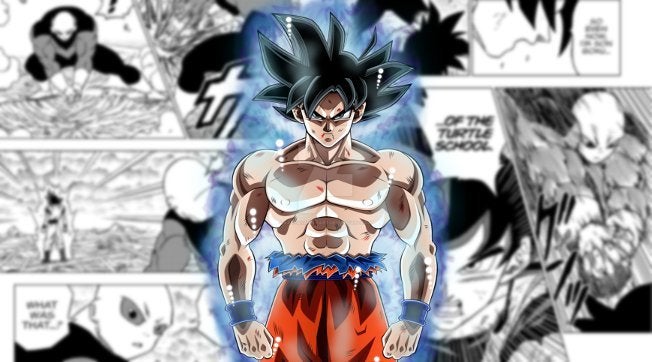The Dragon Ball Super Manga: Storyline Analysis and Differences from the Anime

Introduction
Dragon Ball Super, the highly popular continuation of the Dragon Ball franchise, captivated fans through both its manga and anime adaptations. While the anime version gained widespread recognition, the manga counterpart offers a unique perspective on the story, often presenting divergences from its animated counterpart. In this article, we delve into the Dragon Ball Super manga, analyzing its storyline and highlighting the significant differences from the anime adaptation.
The Storyline of the Dragon Ball Super Manga
The Dragon Ball Super manga, authored by Akira Toriyama and illustrated by Toyotarou, serves as an alternate version of the story presented in the anime. It follows the adventures of Goku, Vegeta, and their allies as they face powerful foes and explore new realms and dimensions.
The manga starts with the retelling of the Battle of Gods arc, where Beerus, the God of Destruction, is introduced. However, as the story progresses, the manga diverges from the anime, presenting unique storylines and variations in character development.
One notable difference is the inclusion of additional content and story arcs in the manga. For example, the Galactic Patrol Prisoner arc, which centers around the powerful villain Moro, is exclusive to the manga and offers an original narrative not found in the anime. This arc explores the conflict between the Galactic Patrol and Moro, who possesses the ability to absorb energy and threatens the entire universe.
Furthermore, the Tournament of Power arc, a crucial storyline in Dragon Ball Super, is portrayed differently in the manga. While the anime version spanned over 50 episodes, the manga condensed the tournament into a shorter timeframe, resulting in altered fights and outcomes. These differences provide readers with a fresh experience and offer an alternative perspective on the intense battles and character interactions.
Differences Between the Dragon Ball Super Manga and Anime
Several key differences exist between the Dragon Ball Super manga and anime adaptations, which contribute to their unique storytelling experiences. These disparities range from minor alterations to major narrative deviations.
One significant difference lies in the pacing of the story. The manga often progresses at a faster rate compared to the anime, covering more ground in a shorter span. This faster pace allows the manga to delve deeper into specific plotlines and explore additional story arcs that may not be present or are condensed in the anime. As a result, readers may experience a more streamlined and concentrated narrative in the manga.
Another notable difference is the variation in characterizations and character arcs. While the core personalities and motivations remain consistent, the manga offers distinct character developments and interactions that may differ from their animated counterparts. This divergence allows readers to gain new insights into the characters and witness alternative storylines that may not have been explored in the anime.
Additionally, the visual presentation in the manga offers a unique artistic style, courtesy of Toyotarou. The black and white illustrations convey a different aesthetic compared to the vibrant colors and motion of the anime. This variation in visual representation adds a fresh perspective to the Dragon Ball Super universe and can enhance the reading experience for manga enthusiasts.
Impact and Reception of the Dragon Ball Super Manga
The Dragon Ball Super manga has garnered a dedicated fanbase, with readers eagerly anticipating each new chapter. Its unique storyline, deviations from the anime, and the inclusion of exclusive content have contributed to its popularity.
The manga’s ability to explore additional story arcs and offer alternative character developments has sparked discussions and debates among fans. It provides an opportunity for readers to engage in speculative conversations about the narrative choices and compare them with the anime adaptation.
Moreover, the manga’s art style and visual presentation have received acclaim for their detailed illustrations and dynamic action sequences. Toyotarou’s talent in capturing the essence of the Dragon Ball universe in black and white further enhances the reading experience and immerses fans in the story.
Overall, the Dragon Ball Super manga stands as a companion piece to the anime, offering an alternative perspective on the beloved franchise. Its unique storyline, deviations from the animated adaptation, and distinct visual style have solidified its place in the Dragon Ball canon, providing fans with a fresh and engaging reading experience.
Conclusion
The Dragon Ball Super manga presents a captivating and divergent storytelling experience from its anime counterpart. With its unique storylines, altered character developments, and exclusive content, it offers fans a fresh perspective on the Dragon Ball universe. Whether readers choose to follow the manga, the anime, or both, the world of Dragon Ball Super continues to expand and captivate audiences with its thrilling adventures and vibrant characters.
Read More
- Anniversary Flowers Online MiamiFlowersOnline Shop
- “Feuer Speiender Berg (umgangssprachlich) Vegas Bonus Program Code 2024 Aktionscode 55 Freispiele
- 10 Reward Nach Registrierung 10 Euro Gratis Casino
- Vulkan Vegas Casino Auszahlung Erfahrung ️ Standocs
- Vulkan Vegas Erfahrungen 2024: Betrug Oder Seriös? » Zum Test